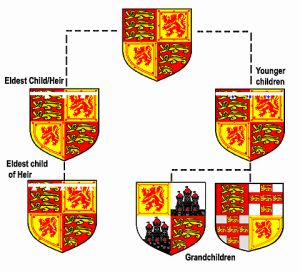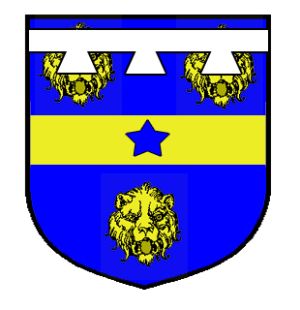Stuart Rules of Cadency
The Stuart Rules of Cadency are so-called because they were codified in the 18th century under the Stuart Kings James IV and VIII, Charles III, and Henry VII. Mostly they followed the traditions of the earlier English royals. While not followed slavishly by other heraldric traditions, they have had an impact on Kemrese Cadency and others, such as those the NAL.
Essentially, the children of a reigning monarch had arms bestowed upon them on or about their 18th birthdays (usually). These would consist of the royal arms with a white label of three points. Younger children (i.e. other than the Heir Presumptive or Heir Apparent) would include on these labels some kind of personal badge--crosses, roses, anchors, etc.
The Heir would however have a bare label, as would the Heir's eldest child. Children of the Heir would be entitled to a white label with five points, the younger such with badges.
Offspring of the younger children of a monarch would quarter their arms, combining the arms of both kingdoms with that of their primary title, with primacy given to the kingdom in which said primary title originates. Thus if a King's grandson were the Duke of York, he would have the English royal arms quartered with the arms of York, where a Duke of Edinburgh would have the Scots royal arms quartered with those of Edinburgh (see illustration).
Exceptions had to be made almost immediately to these rules, since Henry VII's heir was Mary II, who wed the King of Kemr and her heir was also a woman, Victoria. The latter's husband, the younger son of an Earl, was entitled to his own arms and in theory Albert I should have borne his arms rather than that of the Stuarts. In the latter case, this was avoided by declared Albert I the head of the second house of Plantagenet. Likewise the husbands of Queen Elizabeth and Queen Diana have waived all rights to having their children bear their father's arms (although younger children often choose badges echoing their father's arms). It should be noted that current Queen's husband does not in fact have a coat of arms.
These rules of cadency apply to the English and Scots royal family, but do not in general apply to other arms within the Kingdoms, each of whom have their own systems of cadency.


